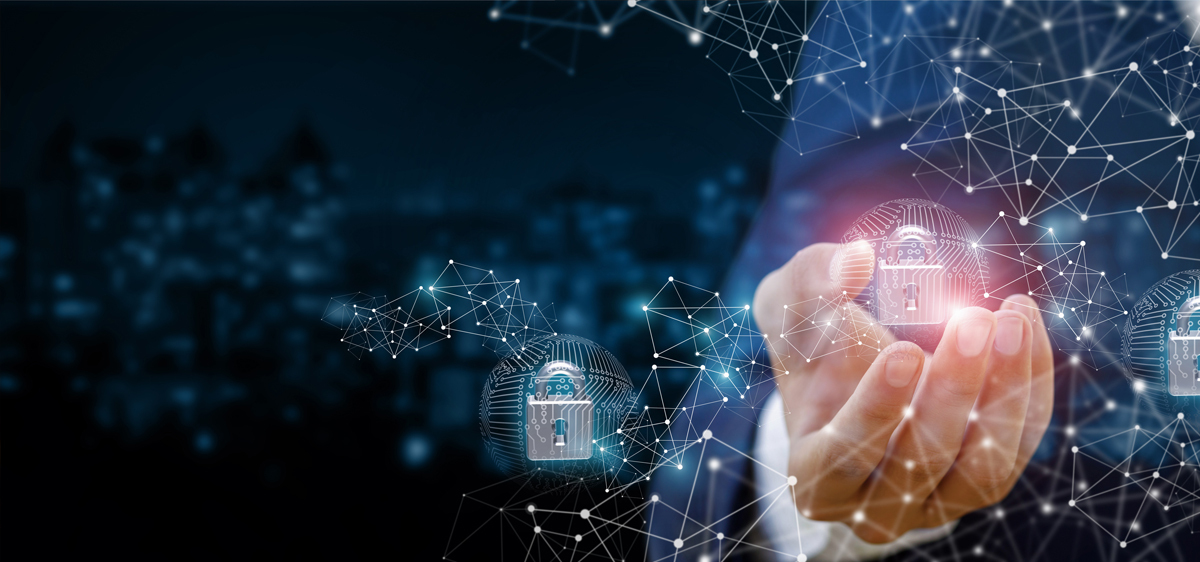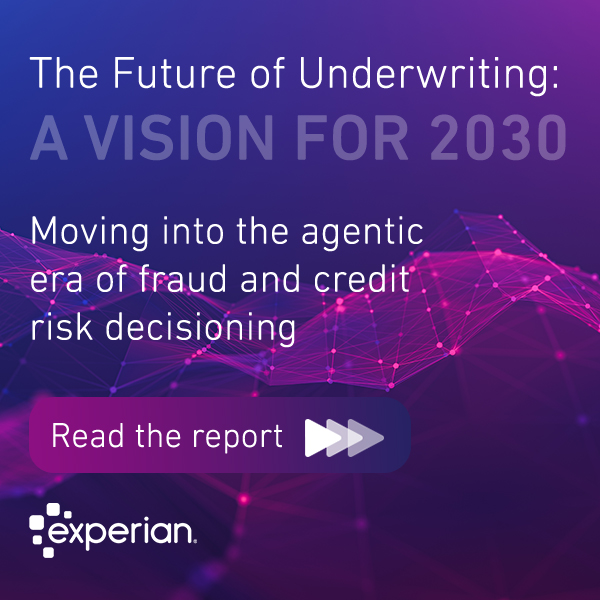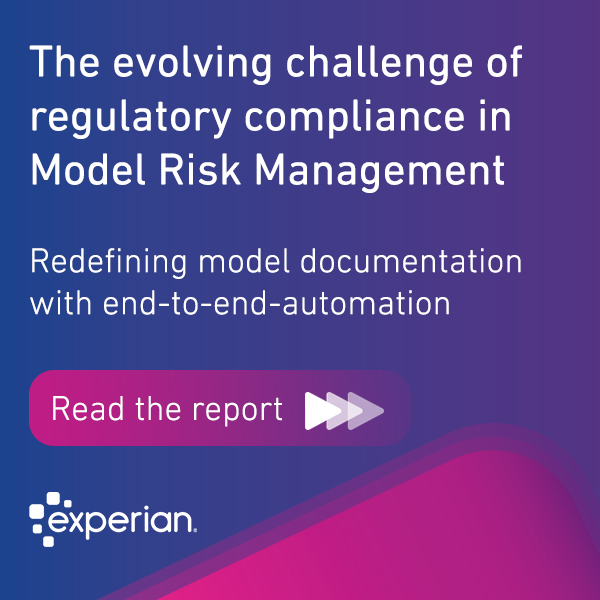Tag: Identity & Fraud

To keep you informed, we’ve gathered the top global, August headlines covering the latest insights from our experts and recent hot topics. Email attack type: Account takeoverZDNet Japan covers ATO (account takeover) fraud and the variety of techniques used in this attack type to access user accounts and ultimately steal money or sensitive information. In today’s rapidly changing economy, businesses need to get consumer recognition rightDavid Britton, VP of Global Identity & Fraud, shares insights on the disparity between businesses' confidence in recognizing consumers and consumers' lower confidence in this capability by these businesses. EDBI invests in fraud protection fintech VestaThe Straits Times, Singapore, provides an overview of this investment, including details around the increase in online fraud losses recognized across the Asia Pacific (APAC). How banks can balance UX and security amid a pandemicThis Forbes article explores the impact of Covid-19 on consumers, including the critical need for banks to balance consumer protection and good user experience. Stay in the know with our latest insights:

In a recent interview by Irene Ang from Identity Engineering at Microsoft, our own Marika Vilen, SVP of Platform Commercialization, discusses the importance of identity verification solutions and how to seamlessly integrate those across the digital user journey. We are very excited to be working with Microsoft. Identity verification allows organizations to confirm the person they are dealing with online is who they say they are. In light of the ongoing global pandemic, we see an uptick in digital activity and therefore an increased need for organizations to better verify who they are interacting with online, all while minimizing customer friction. Marika Vilen, SVP of Platform Commercialization, Experian Since COVID-19 started, there has been a 20% increase overall in consumer online transaction activities, our recent proprietary research shows. Consumers cite security as the most important factor in their online experience, particularly in regards to managing their financial data. So, what does this digital shift mean for businesses? Identity verification is an important step to take in digital interactions, and some level of friction can invoke a sense of security, but too much for too many customers can have a negative impact on the bottom line. So, while benefits are evident for identity verification, the process must also factor in the impact on the consumer. By taking a holistic approach that integrates across all stages in a customer relationship, customer friction can be minimized – and customer satisfaction and security maximized. We are proud to be working with Microsoft, integrating solutions that provide rich identity data assets and help inform real-time decision making. Related articles: Are traditional online identification methods becoming obsolete? Q&A: Biometrics as the catalyst for trust in a socially distanced world Getting to grips with the shifting fraud landscape

Chris Ryan, Senior Fraud Business Consultant, talks to Nick Zulovich at the Auto Remarketing podcast about the new ways we are seeing fraud surface as the global pandemic evolves. "The pattern of activity that we're seeing that has really attracted my interest is this notion of human farming. A human farm is a pool of paid labor who research information on potential fraud victims using data that's been stolen through data breaches and using information that people publish through social media and other outlets. The objective of a human farmer is to be able to assemble a detailed profile of a potential fraud victim so that the perpetrator can better impersonate them and navigate around potential security measures and other obstacles that would normally be in the way." Chris Ryan, Senior Fraud Business Consultant Why the opportunity for human farming? People are out of work so there's a recruitment opportunity for those in need of an income. There is a flood of people into the online space who might not ordinarily engage digitally. This demographic may not be tech-savvy and maybe more susceptible to fraud methods such as phishing. Resources that typically screen for fraud are suffering due to office closures. The combination of high tech fraud to find potential victims plus skilled human intelligence makes these methods highly effective. New trend amidst new circumstances - the rise of synthetic ID Remote transactions combined with the high-value nature of the auto industry makes it a very attractive prospect to fraudsters. Even though purchases are down, the fraudsters are still active. Synthetic identity fraud, in particular, continues to be attractive because the identities are not real and therefore not suffering from the same downturn as genuine profiles. Listen to the full podcast here. Related articles: Getting to grips with the shifting fraud landscape Infographic: Top Global Fraud Trends 2020 Covid-19 as a Gateway to Fraud: Top 5 Global Fraud Trends to Watch Out for in 2020

In the second part of the Juniper Research and Experian podcast series on online payment fraud, we talk to Nick Maynard from Juniper Research, and David Britton, Vice President of Industry Solutions at Experian, about maturity in artificial intelligence and virtual assistants, and their current ability to respond to current business challenges. "What we're seeing in the consumer space is that AI is powering these virtual assistants and typically Alexa, Siri, Google, are the three big examples. What that's doing is creating an additional channel, it's a new way for users to interact... it mirrors the digital transition and the mobile transition over a number of years."Nick Maynard, Juniper Research "If you consider where artificial intelligence and machine learning are coming together, this is not going to be a big bang launch into market. We're seeing a slow, incremental roll-out." "In the physical world, when we talk about risk and recognition of a consumer, the human to human interaction takes in a tremendous number of variables to ensure that the person you're engaging with is who they claim to be.... in the digital space, that was eliminated overnight, and cosnumers were using a device as a proxy to represent them to another system or set of devices, like bank servers and eCommerce web servers." David Britton, VP of Industry Solutions We also discuss key points around evolving regulatory frameworks, and how they are driving change in identity-based solutions. Listen to the full podcast episode here, and don't forget to listen to What’s new in online payment fraud Part 1: Implications for consumers and businesses if you haven't already.

The first of a two-part series on our Insights in Action podcast, Nick Maynard, Juniper Research, and David Britton, our VP of Industry Solutions for Global Decision Analytics, discuss the latest developments around online payment fraud, and what the implications look like for consumers and businesses. Following the publication of the latest report on online payment fraud from Juniper Research, this episode takes a closer look at how the mobile revolution has created both opportunities and risks when it comes to online payment. "We're seeing a massive digitalization of existing payment methods and retail, which is being driven for a number of reasons. Convenience is a massive driver, and mobile wallets in particular offer a very convenient solution for payments, and they're being used very widely around the world. Other drivers include the ongoing Coronavirus pandemic, which is having a role in driving the increased usage of the online channel."Nick Maynard, Juniper Research Topics covered in part 1 include: The online payment revolution has been led by mobile, with half of the world’s population estimated to use mobile wallets in the next four years. How this transformation is shaping the new online payment experience. Covid-19 has pushed organizations to prioritize their digital transformation. We look at what the implications will be as a result of the rush to digital. With higher convenience, normally comes a higher risk of fraud – what we can expect to see as a part of this shift to mobile. What businesses can do in the short term to mitigate those rising types of fraud, and what their key operational and strategic considerations should be for the future. Listen to the full podcast here, and look out for what’s new in online payment fraud Part 2: How AI and evolving regulation are driving change

In this episode of Insights in Action, David Britton, Vice President of Global Identity & Fraud Solutions, discusses how the Covid-19 pandemic has prompted a massive shift to online for both consumers and businesses, and examines what implications have emerged across the online fraud landscape because of this. "As with any moment like Covid-19, fraudsters are very quick to pick up on possible areas of vulnerability that they can exploit in the market and in the ecosystem. And fraudsters always like to go where the weakest point is in the ecosystem or the weakest link in the chain. So fraudsters are absolutely taking advantage of this."David Britton Phishing is on the rise - fraudsters are impersonating key institutions and their communication channels to manipulate consumers Account takeover fraud - fraudsters are hiding in the traffic peak, posing as consumers using their credentials How businesses can counter the trend: Keeping online fraud at baySecuring our digital identitiesEnsuring a secure, transparent and meaningful treatment of data "The first thing to do is to ensure businesses are pulling together soft signals to define a better risk strategy and authentication strategy because then you can immediately identify if there's an anomolous actor that's trying to impersonate that 'known' good customer."David Britton Listen to this episode of the Insights in Action podcast

The opportunistic nature of hackers means that a global crisis can create the perfect breeding ground for fraudulent activity, meaning businesses and consumers need to be even more vigilant. View Infographic

There’s a digital payments revolution, and mobile is leading the charge. But at what cost does convenience come? Juniper Research’s latest online payment fraud report explores key issues around increased cybercrime and what that means for businesses looking to invest in fraud prevention. View infographic

Digital interactions between businesses and consumers are on the rise. The ability to authenticate and recognize customers provides a convenient and secure experience. However, the latest Global ID & Fraud Report shows a significant disparity in perception between businesses and consumers when it comes to recognition. View Infographic

The interesting thing about fraud is that it’s always changing. Fraudsters are getting smarter, and fraud threats are constantly evolving. Businesses need to be agile and prepared to quickly shift their fraud strategies to stay a step ahead of emerging fraud threats. Traditionally, it's been very difficult for businesses to keep up – every time they see a shift, new fraud signals must be employed, which means looking at new intelligence signals in order to counter that fraud and then moving through a process of procurement and qualification, and then implementation and integration, of fraud services in order to manage the change. With time of the essence, businesses can no longer wait months to react. They need to be able to react in real-time. Biggest threats for 2020 Covid-19 has accelerated online payment transactions, making way for massive cyber security and data fraud concerns among banks and retailers. The idea of doing more digital business, picking up customers digitally, providing a great digital experience is going to be more and more important as we move through the pandemic. Even businesses which traditionally see most of their customer traffic through bricks and mortar might start to see that shift. All of this means that there is more opportunity for fraudsters to be part of the process and to take advantage of that digital interaction. The risk of fraud is going to increase as more people go digital – In part because of sheer numbers, and in part because more of the people who are going online now maybe doing so for the first time. So companies and consumers alike are less prepared for that kind of interaction. Account opening is likely to drop because of Covid-19, but we should expect to see a sharp increase in account take over fraud. There are a lot of people who are being forced to go online now to transact. They may need to turn to ecommerce. They may need to look at online banking to move their banking online. But the point is, they may never have gone online to perform these tasks before. Many vendors have been rapidly rolling out new technology solutions to help banks and retailers manage this new online demand, which has potentially exacerbated digital fragmentation, privacy concerns, and governance expectations. The importance of continuous risking and self-service The speed at which fraudsters adapt to new technology and behavior has always been a problem, but now that we are seeing sudden and unpredictable change, reacting at speed with new fraud strategies has never been more important for businesses. Typically, businesses need to move through validation, contract and then integration in order to do this – making for a long and tedious (not to mention expensive) process. The new release of CrossCore will pre-qualify fraud and intelligence services so that they are pre-integrated meaning that businesses can choose how they want their transactions to be processed, which fraud and identity services they want to use, and they can do so through simple self-service. There is also a feedback loop where reports are generated on how much fraud was detected. Businesses can access their feedback loop almost in real-time and see if their fraud strategies are working or not, and then adjust things as they go. Customer experience when all of your customers are online The ability to passively and strongly identify a customer is a difficult balance to strike when the goal is not to inconvenience the user. And now that most consumers are running their lives online, they demand not only a secure experience, but a convenient one too. To achieve this, a lot of signals about that person are collected. These range from device characteristics and who it is registered with, to behavior on the device and whether these signals match up to the same person. In order to process this data, the signal streams that come in must be considered and then almost in real-time, fraud analytics allow a decision to be made on whether the interaction is with a genuine person or a fraudster. To be able to reduce friction while passively and strongly identifying a person, advanced analytics becomes integral. More about how our latest upgrades can help your business

In a report made available this month, Juniper Research anticipates that in 2024, remote purchases for digital and physical goods will exceed 285 billion transactions per annum; an 80% increase on the figure for 2019. And, that values will increase by nearly 60% to over $9 trillion. It’s impossible to look at these numbers without considering the impact of the massive migration to digital channels that businesses and their customers made to stay engaged during the early response to Covid-19. Finding ways to support customers and their needs remotely has been met with a lot of creative solutions and we see new trends taking hold. For example, “buy online and pick up in-store” and “buy now and pay later” provides customers the access they need for goods and services now with a lot of conveniences. Convenience is a significant part of the customer experience but unfortunately can expose a business to a lot of fraud. According to David Britton, “Fraudsters will always be at the forefront of technology exploitation.” There is evidence of this not only in technological innovation but in the manipulation of human behavior, otherwise known as social engineering. According to Juniper, new technologies such as artificial intelligence will take social engineering to unseen levels of success, like the rise we're seeing in fictitious or synthetic identities. But while it might seem like an impossible problem to manage, businesses have solutions available to them to prevent fraud, including using AI against cybercriminals. In fact, Experian believes that there the layered approach to fraud detection and prevention can significantly protect businesses, and their customers, throughout the credit lifecycle, and withstand the changing face of fraud. Check out the report on key trends and capabilities required for securing digital payments and find out more about Experian's solution on the Juniper Research Leaderboard. Related content: Protect your family from potential fraud when kids are playing video games Getting to grips with the shifting fraud landscape

Depending on location, social distancing has been in full effect for 8-9 weeks and it’s taken its toll on parents juggling work, school and keeping kids busy. Many parents have eased up on video gaming restrictions as way to let their kids and teens to connect with friends outside of remote learning classroom activities. According to Verizon, video game-related streaming was up 75% in the first week of quarantine and has experienced double-digit increases over typical day figures pre-Covid. Bloomberg reported that Italy’s largest telecommunications company, Telecom Italia, had a 70% increase in Internet traffic, due in large part to streaming video games. The uptick in video game usage means not only an increase in kids’ screen time but greater fraud risks as younger gamers are especially vulnerable to hackers. Anywhere there’s transferable value, there’s a high potential for fraud to occur. Many of the traditional fraud methods we’ve seen in other payment types also apply to video game accounts, such as stolen credentials to open new accounts or unauthorized purchases made using an existing account. Gaming fraud also has unique features like compromising another players’ account to use their resources, whether it’s virtual money, like v-bucks or star coins, or other rewards, like exclusive tools, skins, or power-ups. Unlike a bank or credit card lender, unraveling and finding the source of fraudulent behavior in video games is difficult. That’s why it’s important to be aware of the security measures that video game companies offer, what indicators to look for if you think your account has been hacked, and what more you and your kids can do to protect payment information. Many online video games use passwords, and in some cases two-factor authentication, to protect your kids’ gaming accounts. If you believe your account has been seriously compromised, there are ways to contact the software developer and remediation services are provided. But despite these security measures, there’s more that can be done. Most importantly, don’t share any personal information when talking to other players. Some gamers are also social engineers who try to gain information on the real people playing the games – whether it’s your real name, location and age or it’s details about your life, your dog’s name, where you moved from, or email address. What may seem like a harmless exchange of information could lead to a social engineering fraud attack where an account is opened using your kids (or their parents’) information to impersonate them. The information exchanged could also be sold for cash on the Dark Web, where personal information is collected and sold to career fraudsters. What businesses can do: Explore the use of behavioral biometrics to add another layer to simple password protectionsUnderstand the role device identity can play, like exposing which vulnerable accounts have been accessed by a known fraudster but where digital goods have not yet been movedReview your risk policies and consider a layered security approach that will level up or down based on the type of in-game transaction What kids can do: Talk about the game and strategy only and don’t give away any personal informationPut yourself on mute when talking to someone in the same physical room while playing games Don’t gift rewards or virtual money with anyone you don’t know in real-life What parents can do: Make sure you practice good password hygiene Turn on any additional security features offered, like two-factor authenticationScrutinize every transaction in your account history With the usage increase of tools to connect with people, there’s also a trend worth mentioning that doesn’t necessarily lead to financial loss but worth a word of warning: opportunistic disruption. Put simply, some hackers are simply trying to get into your account because they can and occasionally flash up or post inappropriate images and messages or simply push irrelevant advertising (aka click fraud). This can be especially harmful to younger gamers. The good news is that game makers seem to be aware and acting against these sorts of behaviors with increased priority and use of advanced security technologies. This same disruption has been seen in conferencing services used for schools and businesses. Whether you grew up playing the original Nintendo games or are an avid gamer family now, gaming trends among kids and adults continue to grow despite being in the throws of self-isolation. The answer isn’t to turn off the gaming system but rather be aware that online video games are also vulnerable to the fraud attacks often seen in other industries. Related stories: Q&A: Biometrics as the catalyst for trust in a socially distant world Are traditional online identification methods becoming obsolete?




